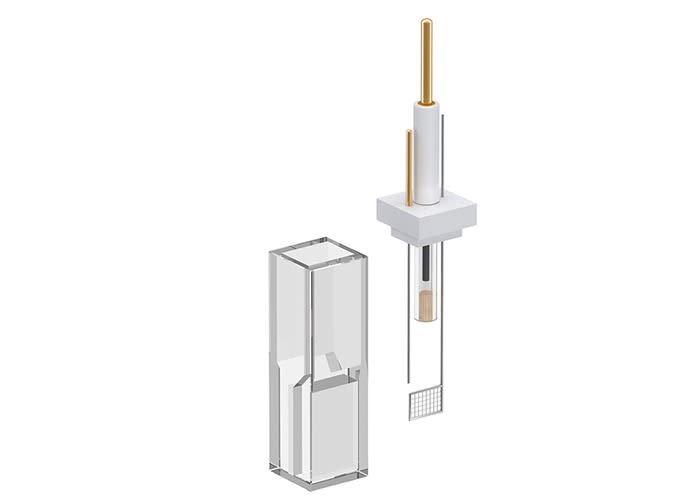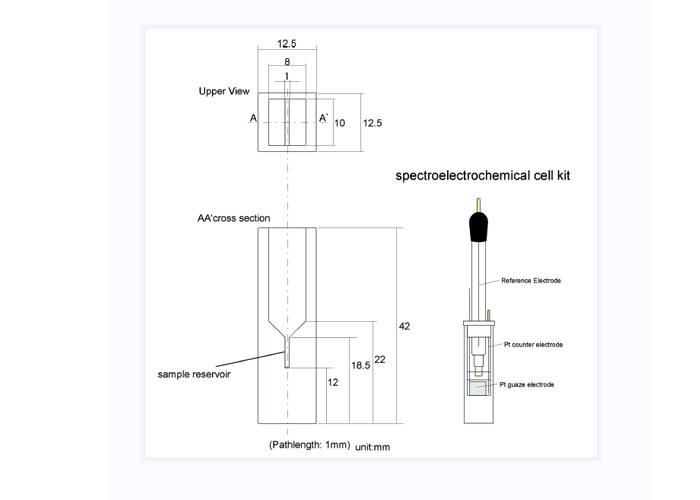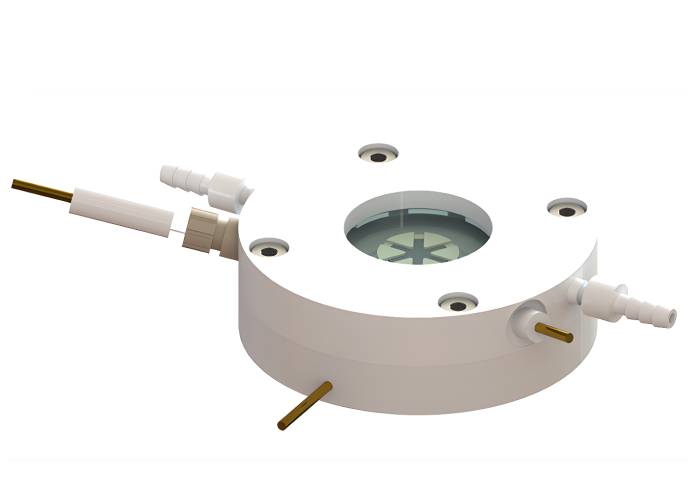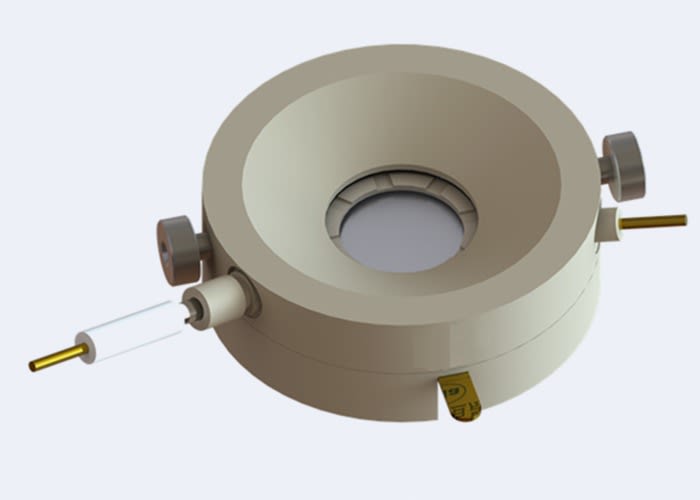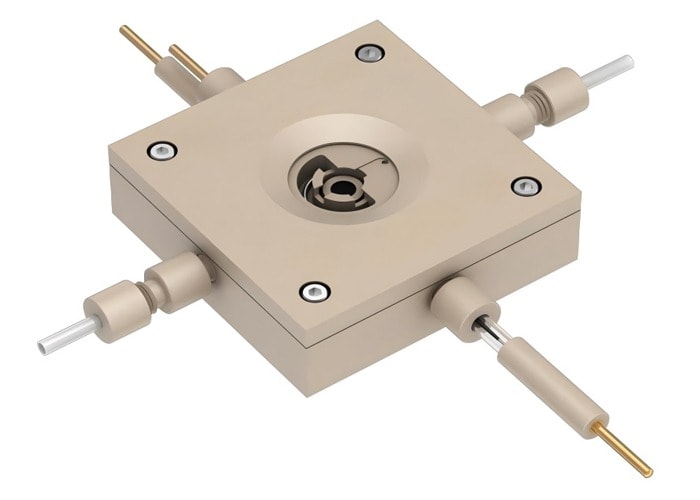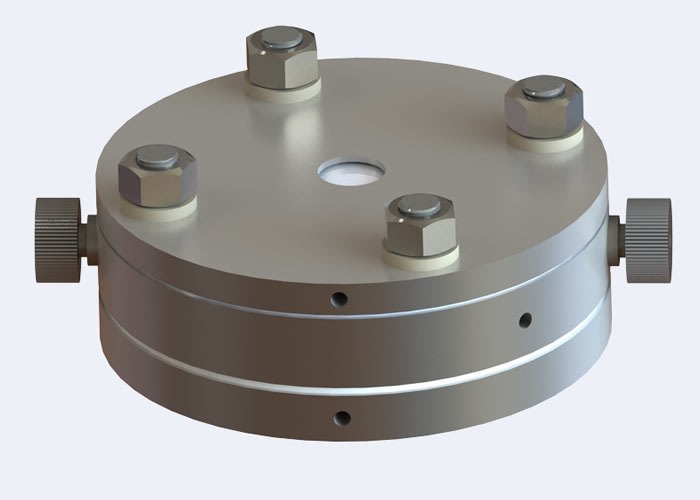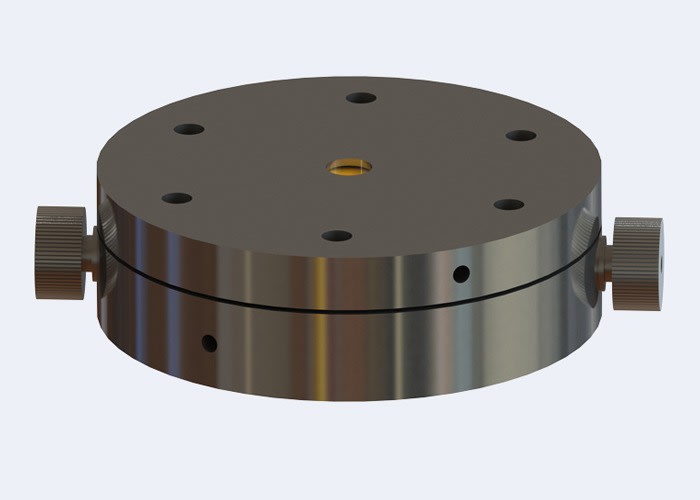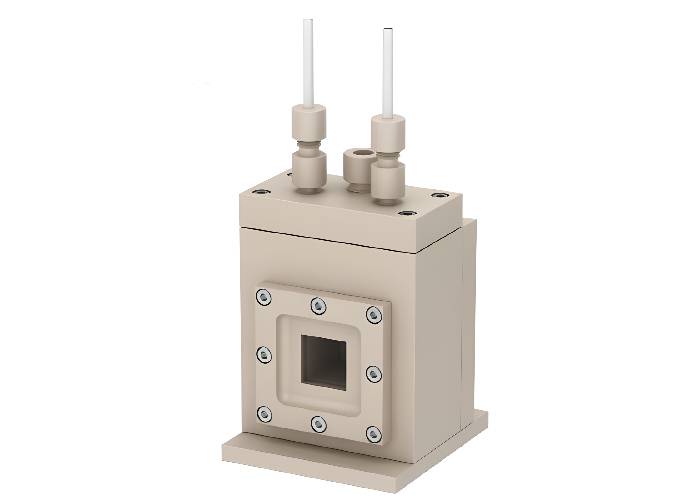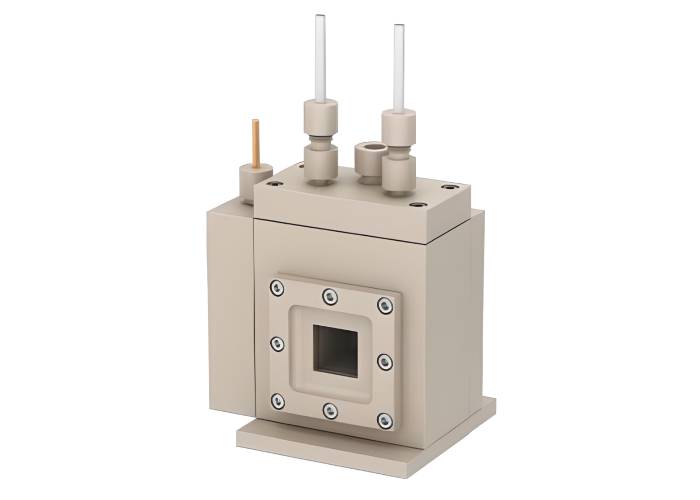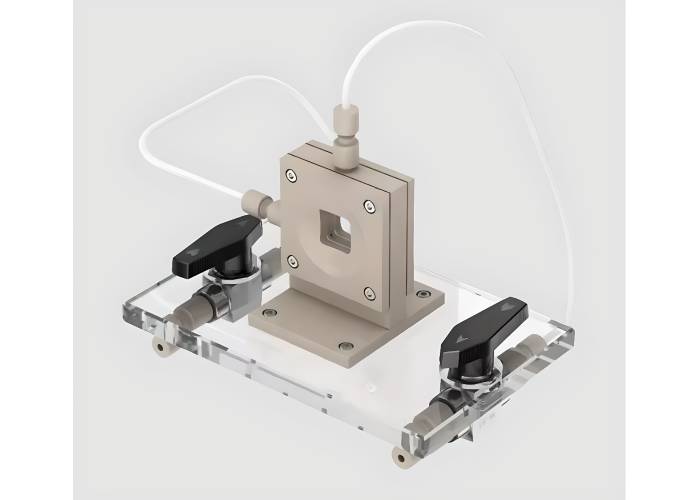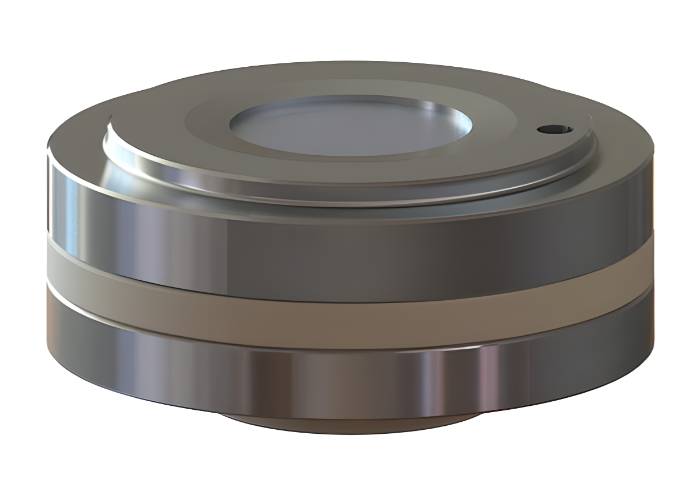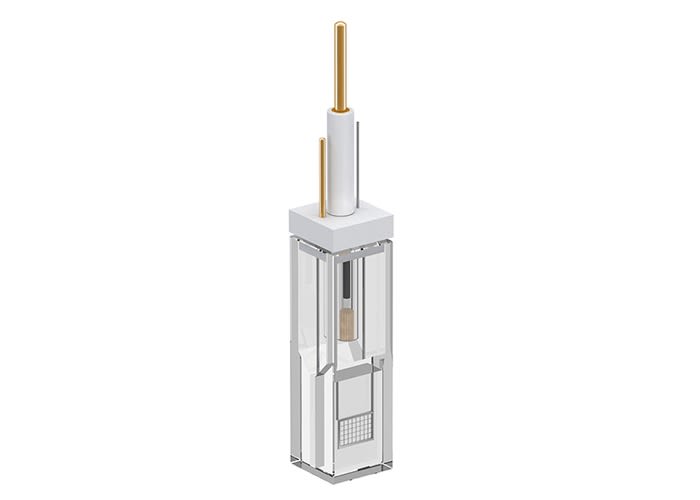
Spectroelectrochemical Cell
Spectroelectrochemical Cell – quartz cuvette-style cell with transparent optical windows and electrode ports
Description
The Spectroelectrochemical Cell integrates optical transparency and electrochemical control into a single cuvette-style platform, enabling researchers to observe chemical and electronic changes in real time under applied potential. Constructed from precision-ground optical-grade quartz, the cell offers exceptional transmission across the UV–Vis–NIR spectrum while maintaining full compatibility with three-electrode configurations (working, reference, and counter). The PTFE lid provides gas-tight sealing and chemical inertness, allowing experiments in aqueous, non-aqueous, or inert-gas environments.
Designed for in-situ Raman and UV–Vis spectroelectrochemistry, this compact and durable cell supports transparent electrodes such as ITO, FTO, gold mesh, or carbon films, enabling optical probing directly through the electrode interface. Its modular design allows easy electrode replacement and adaptation to various optical geometries.
Applications include electrocatalyst characterisation, redox reaction monitoring, charge-transfer analysis, electrochromic material studies, and real-time identification of intermediates in catalytic or photoelectrochemical systems.
For tailored optical path lengths, window materials, or electrode configurations, please contact us.
Optical Compatibility – Raman & UV–Vis–NIR
The ScienceGears Spectroelectrochemical Cell is optimised for simultaneous optical and electrochemical characterisation, allowing researchers to correlate spectral and electrochemical data in real time.
Raman Spectroscopy
- Compatibility: Fully compatible with in-situ Raman measurements
- Window Material: Optical-grade Quartz or Fused Silica (low Raman background)
- Excitation Range: 488–785 nm (visible Raman range)
- Key Applications: Electrocatalytic intermediates, surface-adsorbed species, CO₂ reduction, molecular films, and redox-active polymers
- Advantages: Minimal background scattering, high optical clarity, and excellent chemical resistance
UV–Vis–NIR Spectroscopy
- Compatibility: Ideal for transmission or absorbance spectroscopy across 200–2500 nm
- Electrode Options: Transparent conductive substrates (ITO, FTO, Au mesh, carbon-coated glass)
- Applications: Electrochromic materials, bandgap variation, oxidation-state tracking, charge-transfer kinetics
- Advantages: Wide spectral coverage, high reproducibility, and low stray light loss
Recommended Configuration
- Use quartz or fused silica for full UV–Vis–NIR and Raman compatibility
- Employ transparent or semi-transparent working electrodes
- Maintain bubble-free electrolyte conditions to ensure optical path stability
- For dual Raman + UV–Vis use, align the electrode window with the optical beam and secure laser focus through the active surface
This hybrid design provides a direct correlation between optical absorption or scattering signals and electrochemical responses, giving deep insights into reaction mechanisms and material performance.
For detailed specifications or custom dimensions, please contact us.
Customer Reviews
Related Product
Explore our precision instruments designed for electrochemical research and energy applications
Still Wondering About Something?
Explore our FAQ for fast, clear answers to the most common questions—available 24/7.

